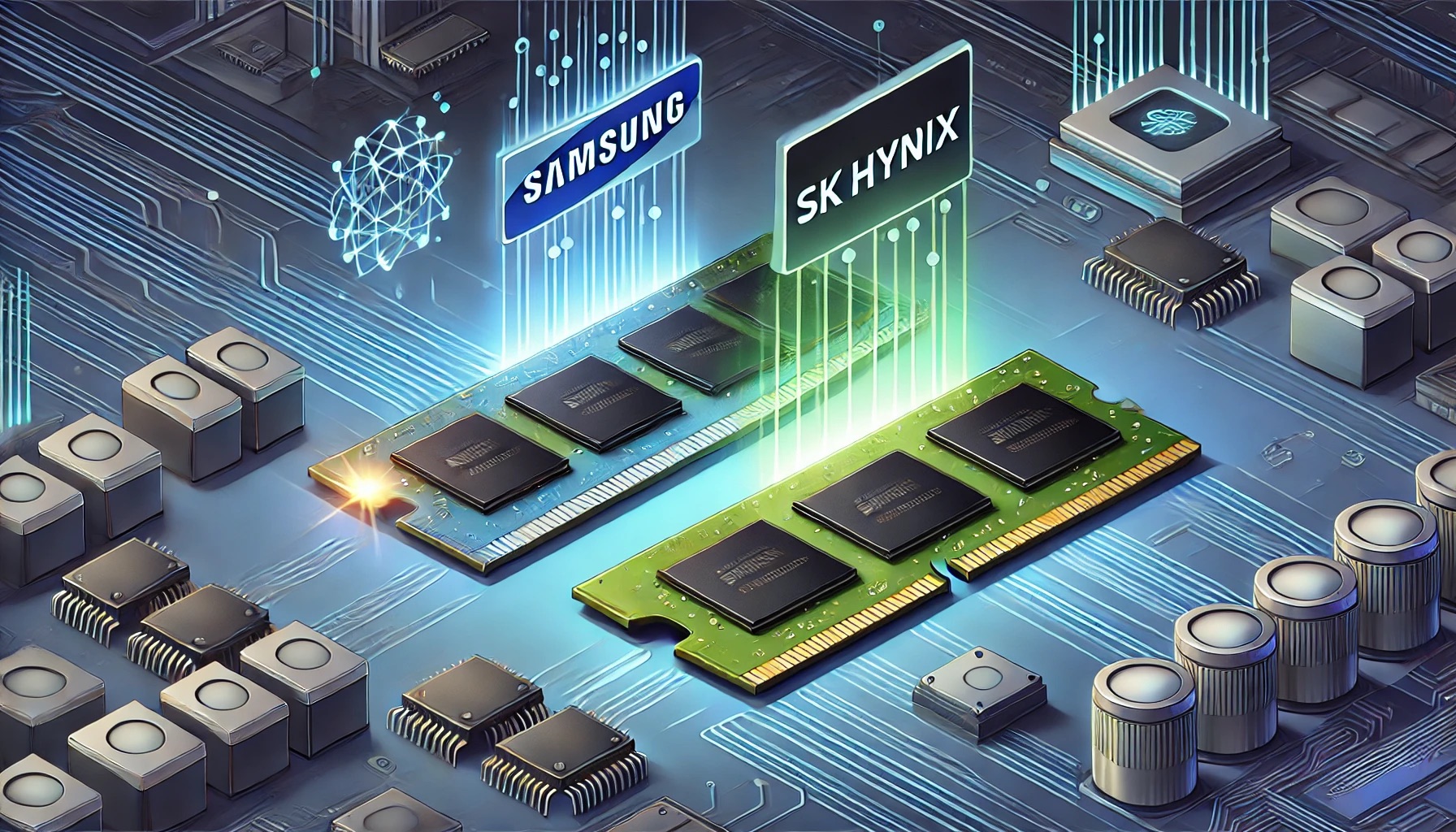Samsung and SK Hynix, giants in the DRAM industry, have partnered to standardize LPDDR6-PIM memory. This groundbreaking effort targets AI bottlenecks and power challenges, paving the way for revolutionary performance gains and energy efficiency in next-generation devices.
PIM Technology Ushers in a New Era for LPDDR6 Memory
It would be more beneficial to standardize than to create another competitive field to dominate each other, at least for the time being, according to the two largest DRAM makers in the world, who have now shaking hands on it.
Enhanced processing capabilities are just the beginning of what LPDDR6 memory can accomplish with PIM (Processing-in-Memory) technology.
The attempts to standardize the LPDDR6-PIM memory, led by Samsung and SK Hynix, are putting rivalry aside, according to My Drivers. This would greatly enhance system performance, especially for popular client devices.
Addressing the Storage and Power Walls
The two greatest obstacles that LPDDR6 memory will encounter without PIM technology are:
The Storage Wall occurs when there is a significant bottleneck in the data transfer process between the processors and memory.
An exponential rise in power consumption due to rising computational demands is known as the Power Wall.
Eliminating both constraints can significantly boost the performance of high-end systems, and both are essential for solving the problem of faster processing of AI workloads. In order for Samsung and SK Hynix to standardize the LPDDR6-PIM memory, the PIM technology needs to be authorized by JEDEC. JEDEC is in charge of defining a single standard for microelectronics.
How PIM Integration Improves DRAM Technology
Per WCCFTECH, with PIM standardized, DRAM makers can use the technology in their memories, giving consumers better LPDDR6 memory for quicker computations.
Memory chips will have PIM built right in as an extra circuit that can do logic operations and matrix multiplications, among other things. Because of this, the system processor won't have to do any extra calculations, and less data will have to be transferred between the two halves.
Both performance and energy consumption will be significantly improved, which, when used on a larger scale, will have a noticeable effect.
Cost and Efficiency Gains for AI and Server Platforms
To keep everything working with the current systems, use PIM on standard memory interfaces like DDR and LPDDR. At first, it will increase the price of memory production, but in the long run, businesses will reap more profits.
There is a need for AI on both consumer devices and server platforms, and as performance requirements get higher, so do energy prices. With the PIM technology's ability to make a big difference, even a little reduction in power consumption will help businesses expand.
Samsung’s Ambitious Plans for PIM Technology
With the promise of a 70% reduction in power consumption, Samsung plans to implement PIM on various types of dynamic random access memory (DRAM), including LPDDR, GDDR, and HBM.



 FDA Says No Black Box Warning Planned for COVID-19 Vaccines Despite Safety Debate
FDA Says No Black Box Warning Planned for COVID-19 Vaccines Despite Safety Debate  SUPERFORTUNE Launches AI-Powered Mobile App, Expanding Beyond Web3 Into $392 Billion Metaphysics Market
SUPERFORTUNE Launches AI-Powered Mobile App, Expanding Beyond Web3 Into $392 Billion Metaphysics Market  Biren Technology Targets Hong Kong IPO to Raise $300 Million Amid China’s AI Chip Push
Biren Technology Targets Hong Kong IPO to Raise $300 Million Amid China’s AI Chip Push  OpenAI Explores Massive Funding Round at $750 Billion Valuation
OpenAI Explores Massive Funding Round at $750 Billion Valuation  Micron Technology Forecasts Surge in Revenue and Earnings on AI-Driven Memory Demand
Micron Technology Forecasts Surge in Revenue and Earnings on AI-Driven Memory Demand  Trump Signs Executive Order to Establish National AI Regulation Standard
Trump Signs Executive Order to Establish National AI Regulation Standard  Trello Outage Disrupts Users as Access Issues Hit Atlassian’s Work Management Platform
Trello Outage Disrupts Users as Access Issues Hit Atlassian’s Work Management Platform  Trump Sues BBC for Defamation Over Edited Capitol Riot Speech Clip
Trump Sues BBC for Defamation Over Edited Capitol Riot Speech Clip  SoftBank Shares Slide as Oracle’s AI Spending Plans Fuel Market Jitters
SoftBank Shares Slide as Oracle’s AI Spending Plans Fuel Market Jitters  noyb Files GDPR Complaints Against TikTok, Grindr, and AppsFlyer Over Alleged Illegal Data Tracking.
noyb Files GDPR Complaints Against TikTok, Grindr, and AppsFlyer Over Alleged Illegal Data Tracking.  Union-Aligned Investors Question Amazon, Walmart and Alphabet on Trump Immigration Policies
Union-Aligned Investors Question Amazon, Walmart and Alphabet on Trump Immigration Policies  Shell M&A Chief Exits After BP Takeover Proposal Rejected
Shell M&A Chief Exits After BP Takeover Proposal Rejected  Republicans Raise National Security Concerns Over Intel’s Testing of China-Linked Chipmaking Tools
Republicans Raise National Security Concerns Over Intel’s Testing of China-Linked Chipmaking Tools  Apple Explores India for iPhone Chip Assembly as Manufacturing Push Accelerates
Apple Explores India for iPhone Chip Assembly as Manufacturing Push Accelerates  Apple App Store Injunction Largely Upheld as Appeals Court Rules on Epic Games Case
Apple App Store Injunction Largely Upheld as Appeals Court Rules on Epic Games Case  ANZ New CEO Forgoes Bonus After Shareholders Reject Executive Pay Report
ANZ New CEO Forgoes Bonus After Shareholders Reject Executive Pay Report  Robinhood Expands Sports Event Contracts With Player Performance Wagers
Robinhood Expands Sports Event Contracts With Player Performance Wagers 































